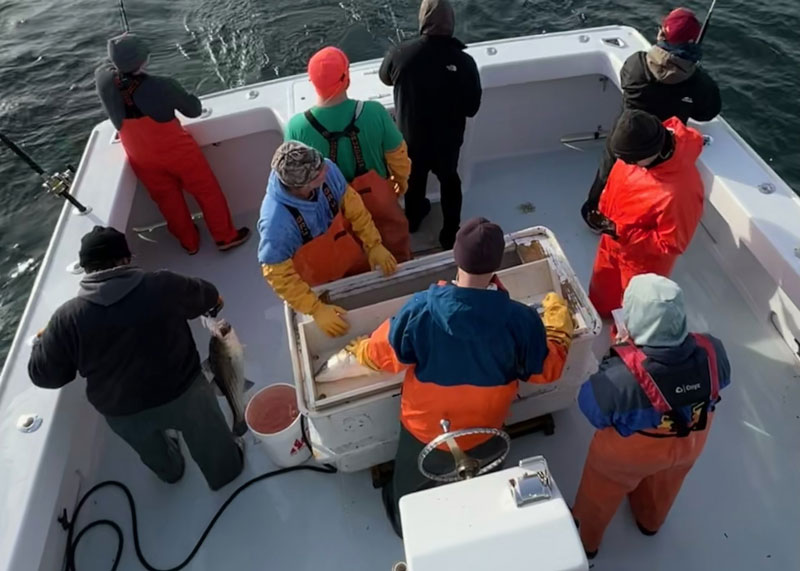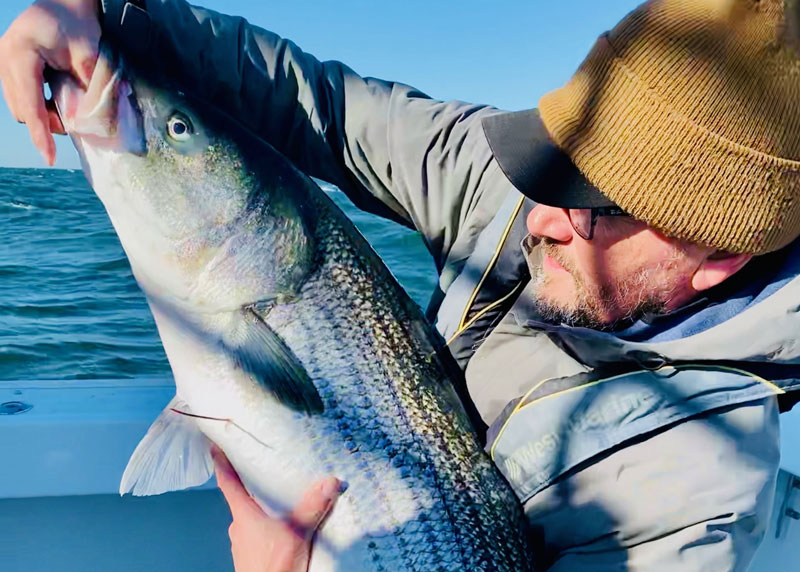As anglers we collectively catch a heck of a lot of fish, and whether we are freshwater fishing, we're fishing the Chesapeake Bay, or we've headed off the coast, some of us will catch fish that are tagged. But have you ever wondered why that fish was tagged?

The Maryland Department of Natural Resources (DNR) tags 13 species of fish, most notably striped bass, and their newer programs tagging blue catfish and snakeheads. Some of the programs are in concert with the United States Fish and Wildlife Service (USFWS), which provides the tags. Those tags and the data collected at the time of capture are then recorded in a national database held by USFWS.
Once a fish is captured it is then measured, its health recorded, and obvious lesions or other conditions noted. The fish’s sex is recorded when possible, the maturity stage is recorded, and scale samples taken if applicable to determine the age of the fish.
There are various types of tags and methods to track and record the fish’s movement, growth, and abundance. For example, the state tagged blue catfish in the Patuxent River with a combination radio/acoustic tag. The transmitters are small and are surgically implanted in the fish’s stomach cavity. They also implanted an external identification streamer just below the back portion of the dorsal fin. These tags have a unique number and include instructions and a contact phone number. The program’s data will be collected through monitoring stations that track the transmitters, spaced along the banks of the Patuxent River. That data will be collected over the next few years and then analyzed to determine where the fish are thriving and how they are affecting the environment.
As for snakehead, the DNR has extended this tagging program. They have tagged up to 500 snakeheads from the Gunpowder River, upper Chesapeake Bay tributaries, and Mattawoman and Nanjemoy creeks off the Potomac River. The program is to help biologists measure the harvest of snakeheads in the Chesapeake Bay watershed and better manage the species. The data will help the DNR to minimize the impact of this invasive fish.

The purpose of the striped bass tagging study is to evaluate the Chesapeake Bay resident and Atlantic migratory stocks. The striped bass are fitted with a pink internal anchor tag that is surgically implanted through an incision made in the left side and slightly behind and below the tip of the fish’s pectoral fin. Tags collected provide USFWS and DNR with striped bass data. Over time, the data is used to record growth rates, mortality rates, survival rates, and migration rates and patterns. To date the Maryland program has tagged over 40,000 striped bass and over 9000 recaptures have been reported. Since 1985 the USFWS and its Atlantic State partners have recorded over 600,000 tagged adult striped bass with nearly 100,000 tags reported by recreational and commercial anglers.
These are just three of the DNR’s 13 tagging programs. There are similar programs in fisheries all across the United States to help manage fish stocks. Let’s do our part. If you catch a tagged fish record its length, where the fish was caught, then follow the instructions on the tag and report it. You may receive a certificate, money, or a prize for a returned tag. But the most important part of returning a tag is your cooperation in the management of a species. In doing your part in the conservation of these fish comes pride in knowing that you made the effort.

Tagged, you’re it — now return the tag.
- By Eric Packard